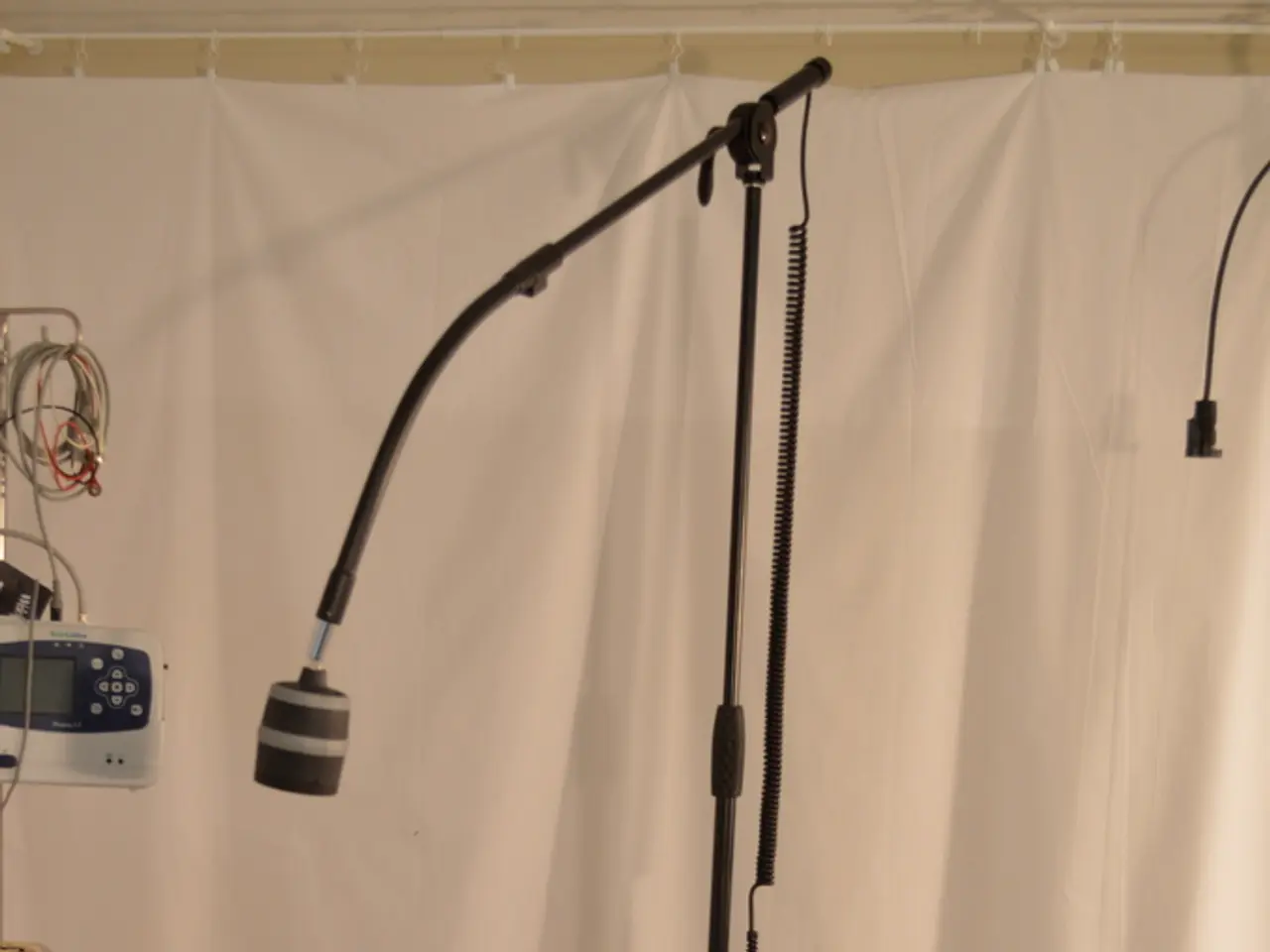Optical Sound Sensor picks up on audible frequencies with the aid of light rays
Transforming Everyday Objects into Microphones with Light
In a groundbreaking development, physicists have created a technology that can turn ordinary objects into microphones using light, paving the way for a new era in sound recording and monitoring. The research, published in the journal Optics Express, was originally featured in an article by Cosmos under the title "Visual microphone listens to sound using light" [1].
Unlike traditional visual microphones that rely on expensive lasers or high-speed cameras and require specific materials like mirrors and retroreflectors, this new approach is simpler, less expensive, and more versatile. It can pick up and decode sound from the surfaces of leaves, paper, and other common objects [2].
The technology works by detecting vibrations caused by sound waves on the surfaces of objects. These vibrations trigger subtle changes in the light intensity captured by a single-pixel detector. These light variations are then processed with software using Fourier analysis to reconstruct clear and intelligible audio signals from the object's subtle movements [3][5].
Experiments have demonstrated the system's effectiveness. By shining a laser on a piece of paper or a plant leaf, the system could detect their vibrations induced by speech or music and successfully reconstruct the original sound with high clarity [1][5]. This method converts the object's physical vibration into optical signals without any direct acoustic sensing at the object itself.
This light-based system could revolutionise the way we record and monitor sound, particularly in special scenarios where traditional microphones fail to work, such as conversing through a glass window. It could also potentially make it possible to talk to someone stuck in a closed-off space like a room or a vehicle [4].
The technology's multifunctional information sensing capabilities are being leveraged for potential future applications in various fields such as environmental monitoring, security, and industrial diagnostics [6]. It could potentially bring new opportunities to many fields, making it a significant breakthrough in acoustic sensing technology.
However, it's important to note that the technology currently exists only in the laboratory [7]. Nevertheless, its potential applications are vast and promising, ranging from helping people communicate in challenging situations to enhancing environmental and industrial monitoring systems.
[1] Cosmos: "Visual microphone listens to sound using light" [2] Optics Express: "Ultrahigh-speed single-pixel imaging of vibrations for acoustic sensing" [3] Optics Express: "A single-pixel camera for visual microphone" [4] Optics Express: "A single-pixel camera for visual microphone: III. Speech recognition" [5] Optics Express: "A single-pixel camera for visual microphone: IV. Musical instrument recognition" [6] Optics Express: "A single-pixel camera for visual microphone: V. Applications and future directions" [7] Optics Express: "A single-pixel camera for visual microphone: I. Theory and experimental setup"
The new approach in sound recording and monitoring, as explained in the research published in Optics Express, utilizes science and technology to transform everyday objects like leaves and paper into microphones using light. This breakthrough in acoustic sensing technology holds immense potential for various fields, opening doors for innovative applications in environmental monitoring, security, industrial diagnostics, and more.




